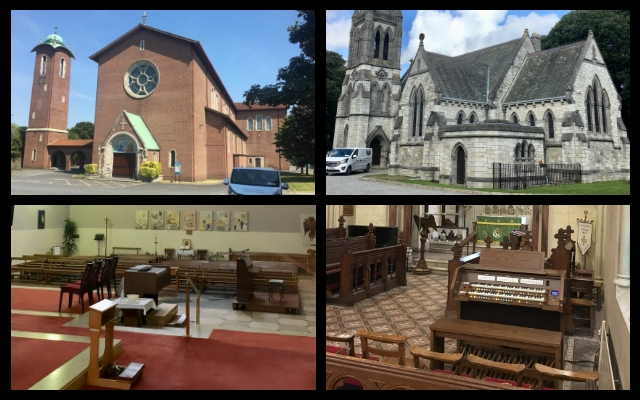I (Francis Rumsey) found myself in Dublin in late August, invited by Viscount’s Irish dealer David Jeffers to voice two rather different Physis-based organs that they had recently installed. The experience brought into sharp focus the differences between voicing a smallish organ in a modest church with limited reverberation, and a large one in a massive space with considerable reverberation.
The Church of the Holy Child, Whitehall
A three-manual Envoy 350-FV on six speakers and a subwoofer had been installed in the Roman Catholic Church of the Holy Child in Whitehall, a suburb of Dublin. The church is a cavernous space, built some 50 years ago out of brick, with an impressive interior housing hundreds of worshippers, surfaced in marble, stone and plaster, with a large open dais for the altar. This results in a large amount of reverberation.
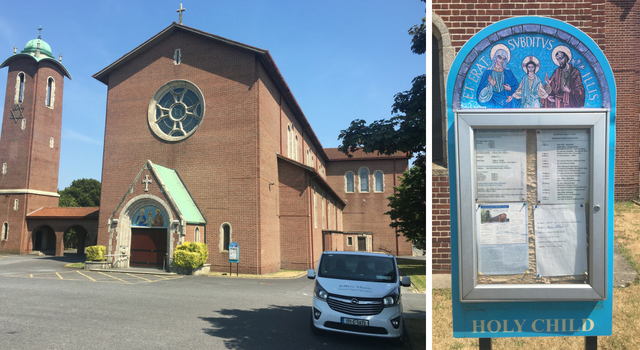
The organ is mainly used for accompanying a choir during masses, but there are numerous funerals, and larger events with more robust congregational singing happen from time to time. Recitals are on the cards now that the new organ has been installed. David had installed his six loudspeakers high up on the wall behind the choir in the north transept, three on either side of a big window, with a subwoofer not far from the console on the floor.
The challenge, then, was to voice the organ in such a way as not to be overwhelming for the choir, but with the possibility of the power and brilliance to put on a big show if needed. In a church like this one, with a lot of reverberation, blend between stops is generally not a problem. The reverb does most of the work for you.
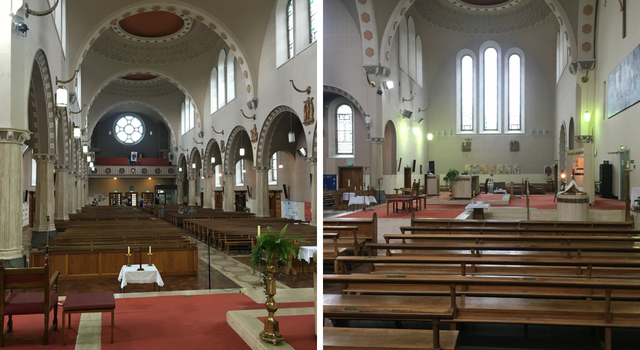
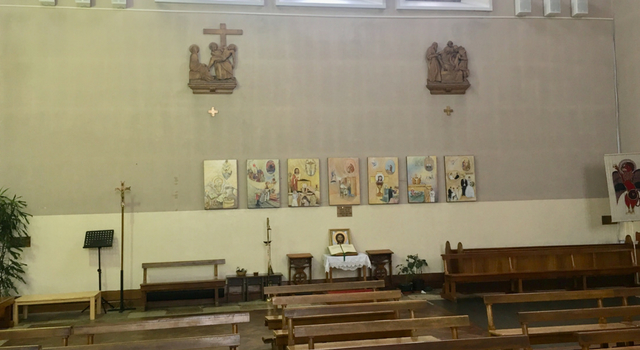
The bigger challenge is in getting sufficient tonal variety and clarity to the individual voices, in order that the whole thing doesn’t end up sounding like a characterless mush. Voice character needs to shine through the swimming pool effect of the church acoustics, especially when one is further from the speakers. French-style reeds can turn out to work quite well in these situations, as they respond well to big acoustics. Their otherwise rather “razzy” character gets nicely smoothed off by the reverb, whilst adding an exciting brilliance to full registrations.
I spread the solo tuba across the full six channels on the back wall, using the recently introduced polyphonic external routing algorithm, which created an arresting en chamade effect with different notes coming from different spatial locations as one plays a solo tune. The overall result after a day and a half of voicing was a fine-sounding instrument that can both accompany a choir in subtle fashion and enable the performance of substantial organ repertoire for a recital or voluntary.
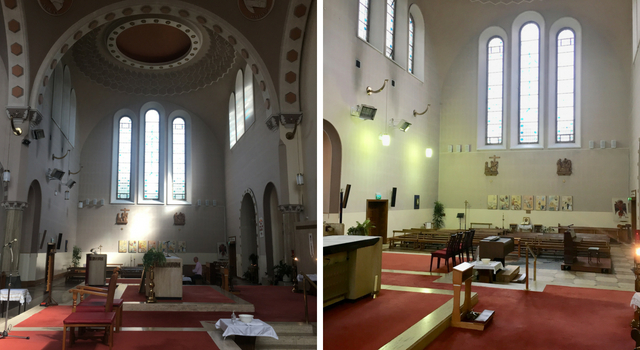
A high level of reverberation has the effect of creating a rather uniform sound field once you get more than a few metres away from the speakers. It means that with only moderate power one can fill a space such as Holy Child without the loudness being overwhelming near the speakers. Walking around the interior of the building while someone else was playing confirmed a thrilling and full sound right to the back of the nave, but with a pipe-like precision to the sound where one had a direct line to the loudspeakers.
All Saints’ Church, Raheny
All Saints in Raheny, on the other hand, is a local Church of Ireland building, of more modest proportions. David Jeffers had recently installed an Envoy 23-S on four channels plus a subwoofer, with the speakers mounted inside the old pipe organ case in the north transept behind the choir.
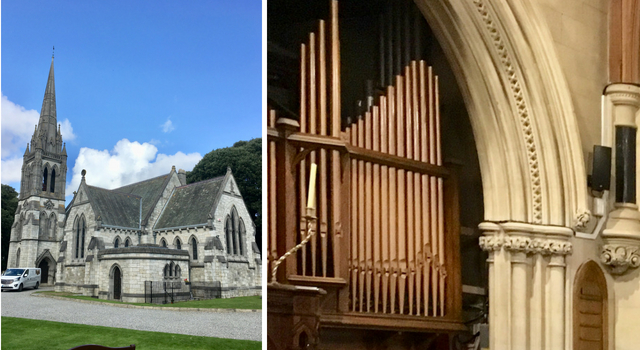
In contrast to Holy Child, here one was close to the loudspeakers with only a limited amount of reverberation. When there’s limited reverberation the inverse square law of sound intensity as you move away from the speakers comes into play more obviously. The organ can sound adequately loud in the choir area only to be too quiet at the back of the nave, and this is a problem that pipe organ voicers have struggled with for many years.
In such a situation you also don’t have the luxury of the beautiful blending and smoothing effect of reverberation, and it can be more of a struggle to voice the instrument to match the space. Reeds have to be much more subdued and generally “rounder” in order to blend adequately, and a big full swell simply doesn’t sound right in such a modest setting.
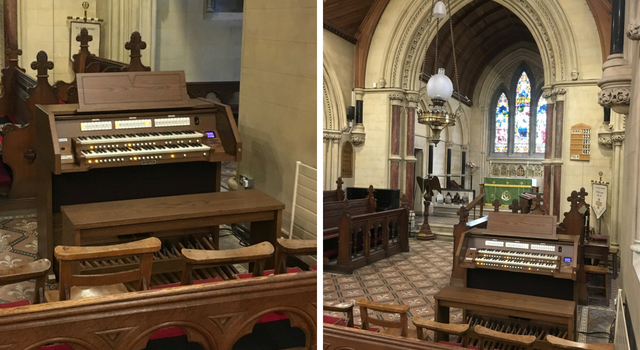
There’s no point putting a fake cathedral organ in a middle-sized parish church. The immediacy of the direct sound of the “flue” stops in the choir area needed careful balancing against their effect further out in the nave. Although I started out with a slightly understated intention so as not to overwhelm the choir, with encouragement from the Rector and his recently engaged choir director sitting at the back of the nave we eventually found a slightly more robust compromise that would stimulate lusty hymn singing.
Here’s to years of good music at these two churches!

I’m a retired academic, with a background in music and audio engineering. I’m currently a consultant for Viscount & Regent Classic Organs, as well as being a freelance organist, including a role as organist/choirmaster at St Mary’s, Witney. I sing bass with Oxford Pro Musica Singers and the Cathedral Singers of Christ Church, Oxford.
